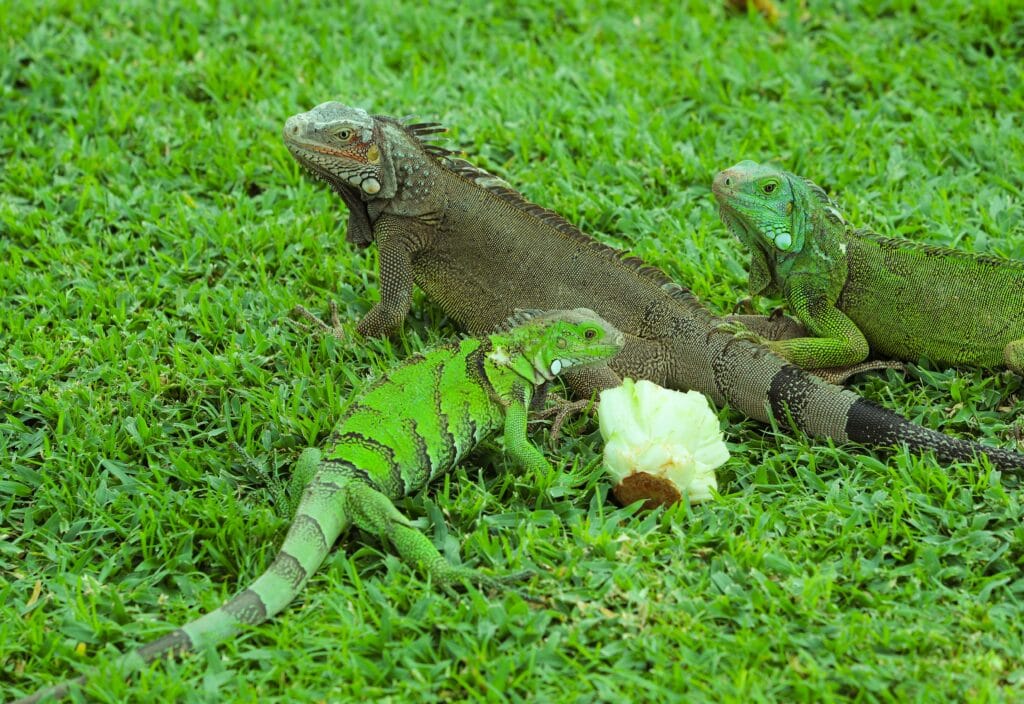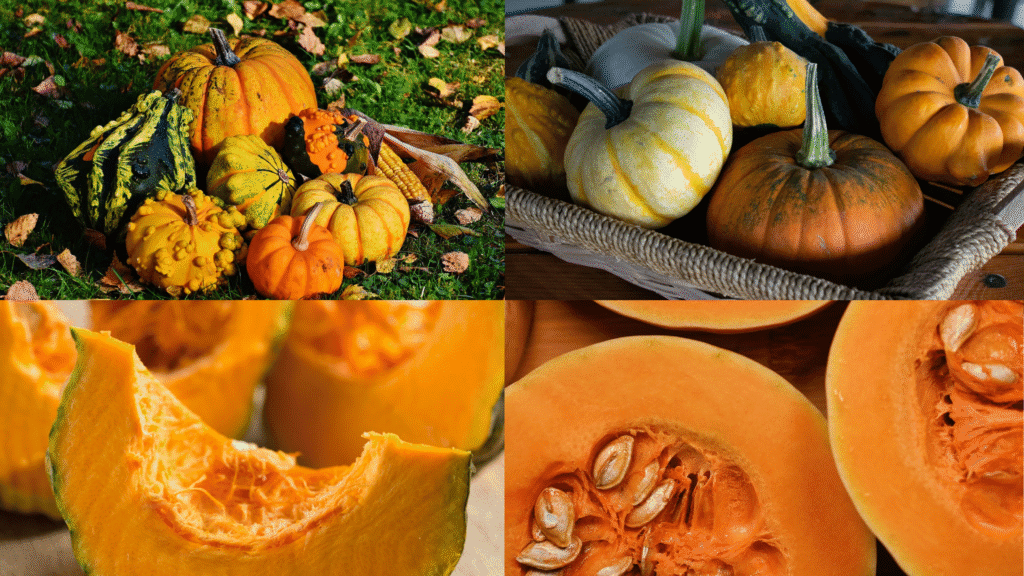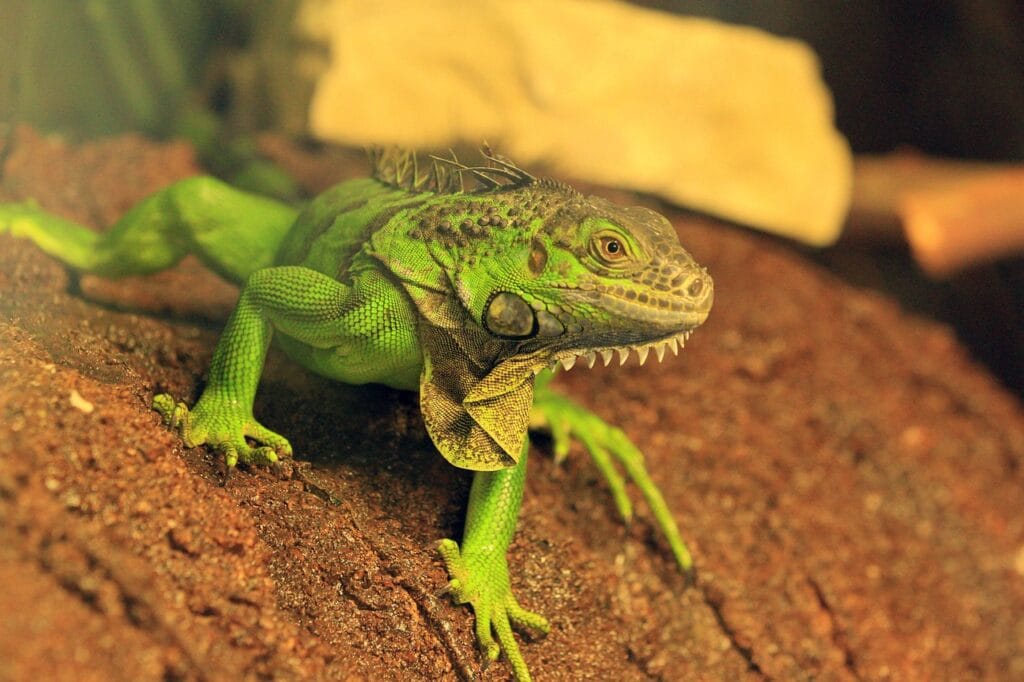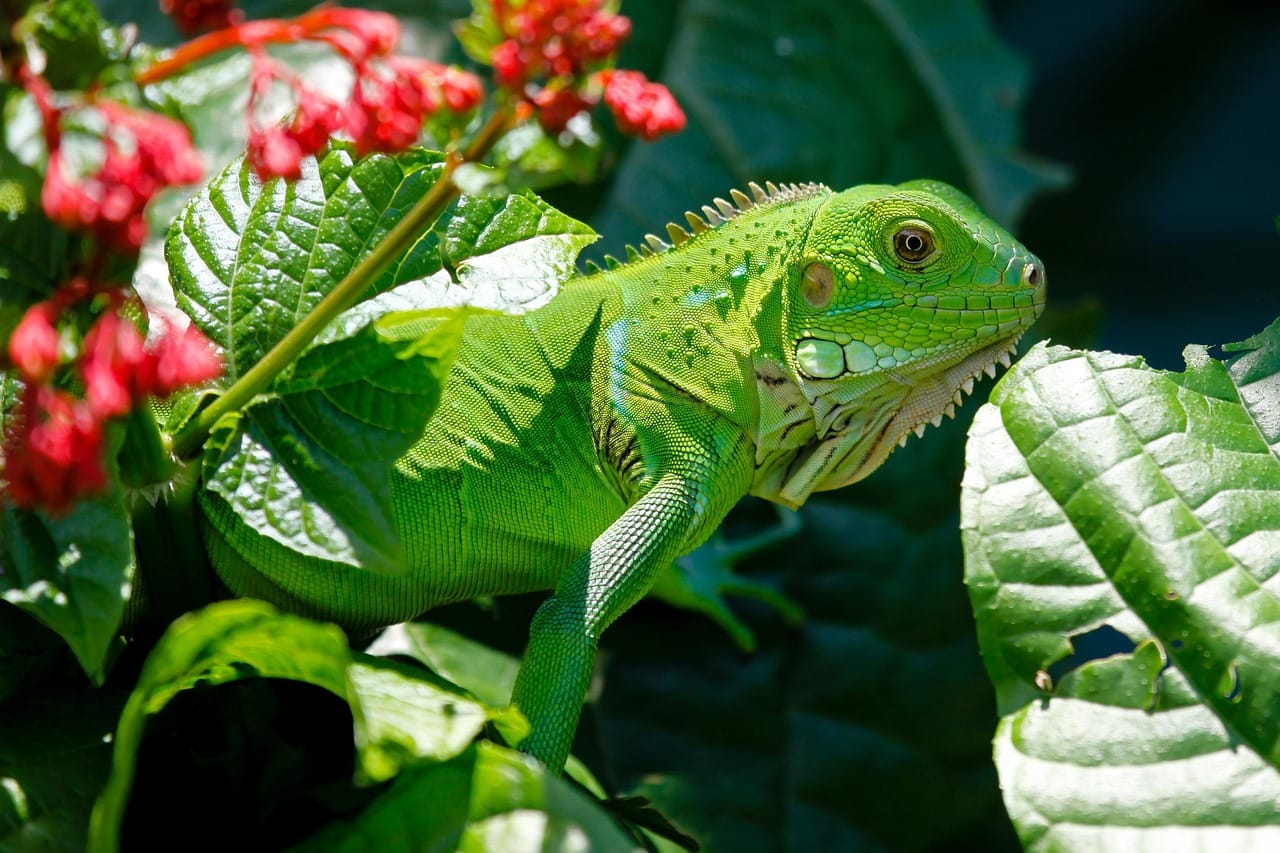Green Iguana Diet – How to Feed Them Right in 7 Powerful Steps
Creating the perfect green iguana diet requires understanding the complex nutritional needs of these magnificent herbivorous reptiles. A well-balanced green iguana forms the cornerstone of your pet’s health, longevity, and vibrant coloration. Unlike many reptiles, iguanas are strict herbivores that require specific plant-based nutrients to maintain optimal physiological function and prevent common health complications.
Table of Contents
Understanding Your Green Iguana’s Nutritional Requirements
The Herbivorous Nature of Green Iguanas
Green iguanas are obligate herbivores, meaning their digestive systems have evolved exclusively to process plant matter. Your green iguana must consist entirely of vegetation, as animal proteins can cause severe kidney damage and metabolic disorders. The gastrointestinal tract of these reptiles contains specialized bacteria that break down cellulose and extract nutrients from fibrous plant materials.
Essential Macronutrients in a Green Iguana Diet
A proper diet should maintain specific ratios of macronutrients. Carbohydrates should comprise approximately 70-80% of the diet, primarily from leafy greens and vegetables. Protein requirements are minimal, around 8-12%, and should come exclusively from plant sources. Fats should represent less than 5% of the total dietary intake.
Calcium to Phosphorus Ratio Importance
The most critical aspect of any iguana diet is maintaining the proper calcium to phosphorus ratio of 2:1. Imbalanced ratios can lead to metabolic bone disease, a devastating condition that affects skeletal development and overall health. This ratio must be carefully monitored in every component of your iguana diet.

The 7 Essential Foods for Your Green Iguana Diet
1. Collard Greens: The Nutritional Powerhouse
Collard greens represent the gold standard in diet staples. These robust leafy vegetables provide exceptional calcium content, essential vitamins A and K, and beneficial antioxidants. The fibrous structure of collard greens promotes healthy digestion and provides the roughage necessary for proper gut function. When preparing collard greens for your iguana diet, remove thick stems and chop leaves into appropriately sized pieces.
2. Dandelion Greens: Wild Nutrition Excellence
Dandelion greens offer unparalleled nutritional density. These often-overlooked weeds contain higher calcium levels than most commercial vegetables, making them invaluable for maintaining strong bones and proper muscle function. The slightly bitter taste of dandelion greens can stimulate appetite and provide essential trace minerals often lacking in captive reptile diets.
3. Mustard Greens: Spicy Nutrition Boost
Mustard greens add variety and essential nutrients while providing natural antimicrobial compounds. The peppery flavor can encourage finicky eaters to consume more vegetation. Rich in vitamins A, C, and K, mustard greens support immune function and promote healthy skin shedding cycles.
4. Turnip Greens: Calcium-Rich Delicacy
Turnip greens excel as a calcium source, providing more bioavailable calcium than many traditional reptile supplements. These leafy tops of turnip roots offer excellent nutritional value and can be fed regularly as part of a rotating green selection. The tender leaves are easily digestible and provide essential folate for cellular function.
5. Squash: Colorful Vitamin A Source
Various squash varieties provide essential vitamin A and natural sugars that support energy metabolism. Butternut squash, acorn squash, and yellow summer squash offer different nutritional profiles and textures. The natural sweetness of squash makes it highly palatable while providing carotenoids that enhance coloration and support eye health.

6. Green Beans: Fiber and Mineral Content
Fresh green beans contribute valuable fiber content and trace minerals to your green iguana diet. These legumes should be offered raw and chopped into appropriate sizes. Green beans provide moderate protein levels from plant sources and essential minerals like manganese and chromium that support metabolic processes.
7. Bell Peppers: Vitamin C Powerhouse
Bell peppers, particularly red and yellow varieties, deliver exceptional vitamin C content crucial for immune system function in your green iguana diet. The high water content helps maintain proper hydration levels, while the natural sugars provide quick energy. Remove all seeds before feeding, as they can cause digestive upset.
Supplementary Foods for Green Iguana Diet Variety
Occasional Treats and Variety Foods
While the seven essential foods form the foundation of your green iguana diet, occasional variety foods can provide enrichment and additional nutrients. Hibiscus flowers, rose petals, and nasturtiums offer natural foraging opportunities and trace nutrients. These should comprise no more than 10% of the total green iguana diet.
Fruits: Limited but Beneficial
Fruits should represent a minimal portion of your iguana diet, offered sparingly as treats. Figs, papayas, and mangoes provide natural enzymes and vitamins but can disrupt calcium absorption if fed in excess. Limit fruit intake to less than 5% of the total dietary volume.
Foods to Avoid in Your Green Iguana Diet
Toxic Plants and Vegetables
Several common plants pose serious health risks and must never be included in your green iguana diet. Avocado contains persin, a compound toxic to reptiles. Rhubarb leaves contain oxalates that can cause kidney damage. Iceberg lettuce lacks nutritional value and can cause digestive issues.
High Oxalate Foods
Foods high in oxalates can interfere with calcium absorption and should be limited in your green iguana diet. Spinach, beet greens, and Swiss chard contain compounds that bind calcium, making it unavailable for absorption. If included, these foods should comprise less than 20% of the total green iguana diet.
Feeding Schedule and Portion Control
Daily Feeding Routine
Adult iguanas should receive their green iguana diet once daily, preferably in the morning when their metabolism is most active. Young, growing iguanas may require twice-daily feedings to support rapid development. Consistency in feeding times helps establish healthy digestive patterns.
Proper Portion Sizes
The appropriate portion size for your green iguana diet depends on the animal’s age, size, and activity level. Adult iguanas typically require 1-2 cups of mixed vegetables daily, while juveniles need proportionally smaller amounts. Monitor body condition regularly to adjust portions accordingly.
Preparation and Presentation Methods
Chopping and Mixing Techniques
Proper preparation enhances the digestibility and appeal of your green iguana diet. Chop all vegetables into pieces approximately the size of the space between your iguana’s eyes. Mix different colored vegetables to create visual appeal and ensure nutritional variety. Thoroughly wash all produce to remove pesticide residues.
Feeding Equipment and Hygiene
Use ceramic or stainless steel feeding dishes for your green iguana diet to prevent bacterial growth and ensure easy cleaning. Replace uneaten food within 24 hours to prevent spoilage and bacterial contamination. Clean feeding areas regularly with reptile-safe disinfectants.

Seasonal Considerations for Green Iguana Diet
Winter Feeding Adjustments
During cooler months, your iguana’s metabolism may slow, requiring adjustments to the green iguana diet. Reduce portion sizes slightly and monitor for decreased appetite. Ensure adequate UVB lighting to maintain proper calcium metabolism during winter months.
Summer Dietary Modifications
Higher temperatures increase metabolic rates, potentially requiring larger portions in your green iguana diet. Increase water-rich vegetables like bell peppers and squash to prevent dehydration. Monitor for signs of heat stress and adjust feeding schedules accordingly.
Common Green Iguana Diet Mistakes
Overfeeding Protein Sources
One of the most serious errors in green iguana diet management is providing animal proteins or excessive plant proteins. This can lead to kidney dysfunction and metabolic disorders. Stick strictly to the recommended plant-based foods and avoid commercial iguana foods containing animal derivatives.
Insufficient Calcium Supplementation
Even with a well-balanced green iguana diet, calcium supplementation may be necessary, especially for growing juveniles and gravid females. Use calcium carbonate powder without phosphorus, dusting vegetables lightly 2-3 times per week.
Health Monitoring and Dietary Adjustments
Signs of Proper Nutrition
A healthy green iguana diet will produce regular, well-formed bowel movements, bright alert behavior, and proper growth rates. Skin should appear vibrant with good elasticity, and shedding should occur regularly without complications.
Identifying Nutritional Deficiencies
Poor green iguana diet management can manifest as lethargy, poor appetite, soft or deformed bones, and irregular shedding. Consult with a reptile veterinarian if you notice any concerning changes in your iguana’s condition.
Long-term Dietary Success Strategies
Establishing Healthy Eating Habits
Consistency in your green iguana diet approach helps establish positive feeding behaviors. Introduce new foods gradually and maintain regular feeding schedules. Young iguanas are more adaptable to dietary changes than adults, making early proper nutrition crucial.
Adapting to Life Stage Requirements
Your green iguana diet must evolve with your pet’s changing needs. Juveniles require more frequent feedings and higher protein percentages, while adults need maintenance-level nutrition. Gravid females may require additional calcium and calories during egg production.
Conclusion
Creating and maintaining an optimal green iguana requires dedication, knowledge, and attention to detail. The seven essential foods outlined in this guide provide the foundation for excellent reptile nutrition, but success depends on consistent application of proper feeding principles. By understanding your iguana’s unique nutritional requirements and avoiding common dietary mistakes, you can ensure your pet enjoys a long, healthy, and vibrant life. Remember that a well-planned iguana diet is an investment in your pet’s future well-being and your enjoyment of this remarkable reptilian companion.
faq
How often should I change my green iguana diet menu?
Rotate between the seven essential foods daily, offering 3-4 different vegetables each feeding. This variety ensures balanced nutrition and prevents dietary boredom while maintaining consistency in your iguana diet plan.
Can I feed my iguana the same green iguana diet year-round?
Yes, but make seasonal adjustments for portion sizes and water content. The core green iguana diet remains constant, but you may need to modify quantities based on temperature and your iguana’s activity level.
What percentage of my green iguana diet should be leafy greens versus other vegetables?
Leafy greens should comprise 80-90% of your green iguana diet, with other vegetables like squash and bell peppers making up the remaining 10-20%. This ratio ensures optimal calcium intake and proper nutrition.
How do I know if my green iguana diet is working properly?
Signs of a successful green iguana diet include regular bowel movements, bright coloration, steady growth in juveniles, good appetite, and normal shedding cycles. Any changes in these indicators may suggest dietary adjustments are needed.
Did you enjoy this article?
Help other pet lovers benefit too — Share it on social media! 🐾💚


Leave a Reply